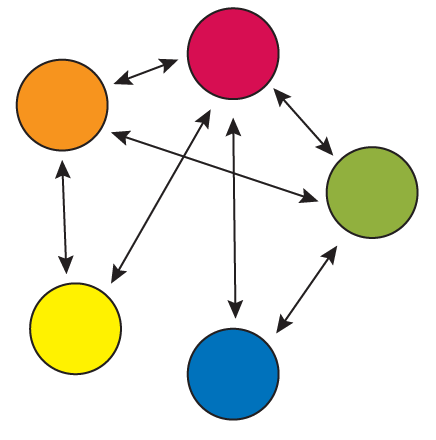recap
54.1 recap
Species are divided into groups of individuals, or populations, that can vary spatially across their geographic range. All populations change in size and spatial extent due to the physical environment, biological interactions, and dispersal. Ecologists use a variety of approaches to estimate population sizes, including full censuses, surveys using quadrats or transects, mark–
learning outcomes
You should be able to:
Use examples to illustrate how species are divided into populations, metapopulations, and geographic ranges.
Describe and compare the three main factors that control population dynamics over time.
List and describe major approaches that ecologists use to estimate population size and extent.
Given a description of a population, choose and justify the most appropriate method for estimating its population size and/or extent.
Question 1
Refer to Figure 54.4. Draw a diagram showing which populations of humpback whales interact on their summer feeding grounds. Do you think all five populations make up one metapopulation during the summer? Explain.

Yes, the five populations of humpback whales make up one metapopulation on their summer feeding grounds. All populations except the yellow and blue populations overlap in their summer feeding areas and thus have the potential to exchange individuals. The yellow and blue populations overlap with the other three populations, however, so they are still part of the metapopulation.
Question 2
Refer to Figure 54.2. What type of species interaction appears to have caused the aphid population to fluctuate in size? What type of species interaction keeps the population size from fluctuating?
Intraspecific competition for food resources is likely responsible for fluctuations in the aphid population size over time. Aphid populations undergo boom-
Question 3
What are some of the ways in which population size and geographic extent of organisms can be measured?
Approaches used to estimate population sizes include full censuses, surveys using quadrats or transects, mark–
Question 4
A researcher wants to determine how many leopard frog tadpoles are present in a pond in the spring. Later, after the tadpoles have metamorphosed, she wants to compare this number with the size of the frog population. What method should the researcher use to determine the population sizes? Explain your answer.
The most appropriate method would probably be mark–
Quantifying population sizes in space and time provides valuable information on the dynamics of a species, but those observations alone cannot explain how, when, and why populations change in size. In order to understand and predict population sizes through time, ecologists characterize population growth, or the change in population size over time, using quantitative methods.